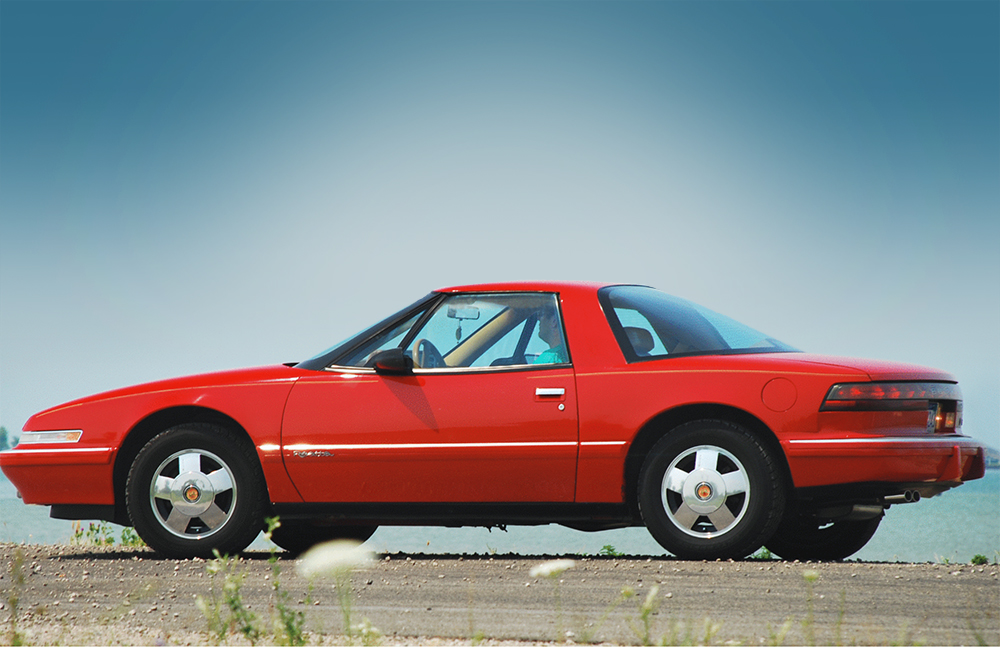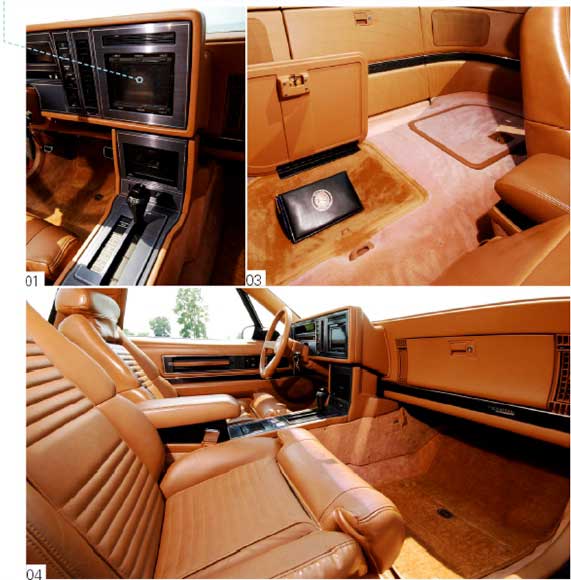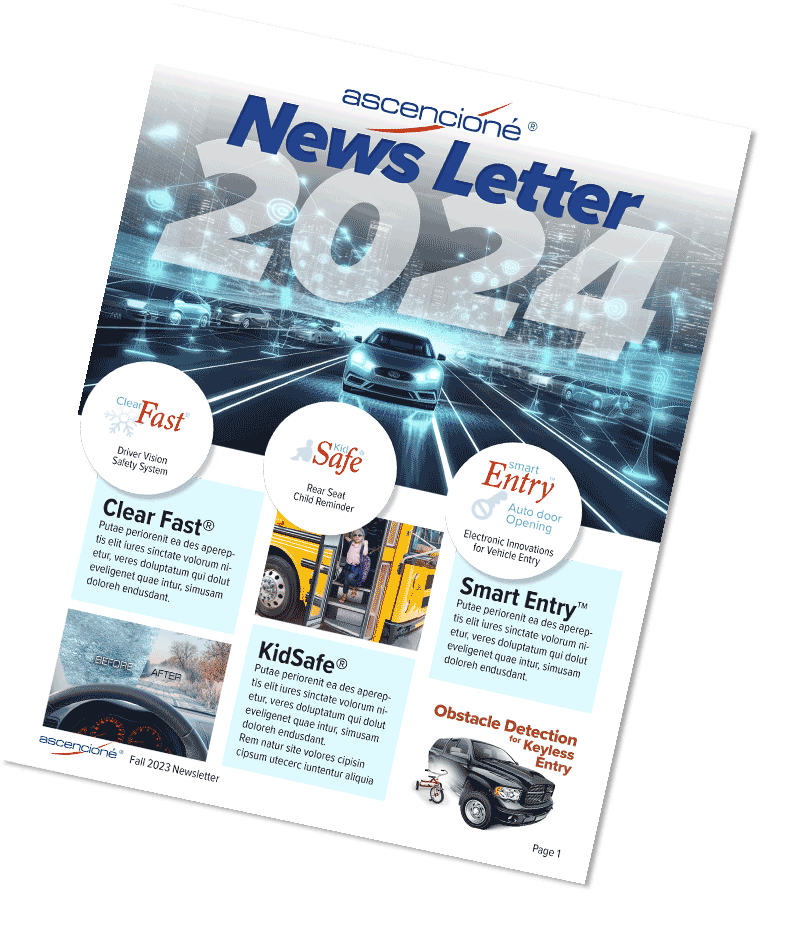

Enter the Buick Reatta. The only way you’ll ever lay rubber in one of these is by stomping the e-brake. But the mature part of you knows it’s okay…that there’s more dimension to the road-going life than outright speed (as Triumph, MG, and Morgan owners can certainly attest). Other factors include provenance, style, technology, comfort, and – in cars nearly twenty years old – dependability and parts availability.
The Reatta has these bases covered.
The Eighties were a confusing time for Buick. General manager Ed Mertz aimed the division away from dynamics after a huge push in performance (Buick-powered Indy cars and the fire-breathing Grand National GNX). Mature, refined American style would be the division’s focus going forward.
During this shift, the Reatta was conceived and developed. As Buick’s most expensive car, as well as its first production two-seater. The Monroney approached $28,000-more than $49,000 in today’s color of money. Based on the truncated E-body platform that underpinned the front-wheel-drive Cadillac Eldorado and Buick Riviera, the Reatta’s wheelbase was only 98.5 inches, three inches shorter than today’s Volkswagen Rabbit.
Build quality was high due to the manner in which the vehicles were hand-assembled at the Reatta Craft Centre in Lansing, Michigan. Each unit bore a Craftsman Log with the actual signatures of assembly supervisors who approved the vehicles for release, and these were not photocopies or printed marketing flotsam.
So nearly twenty years later, what did Buick really build? Looking at the car today, the design has aged rather well. Hidden headlights were in vogue then, and the low-sitting coupe visually promises performance.
Unfortunately, the Reatta never did live up to these go-fast looks.
Aside from its portly 3400-pound curb weight, the blame rests with GM’s venerable 3.8-liter V-6. In this iteration, the 3800 Series I produces only 165 horsepower. Thankfully, the engine is smooth because by this time in its long life it had gained a counter-rotating balance shaft. A four-speed Hydra-Matic handles the shifting duties and sends all available power to a tall 2.97:1 axle ratio. Period reviews pegged 0-60 miles per hour in the high-eights with sub seventeen-second quarter-miles, and our example felt just as spry as the original press-fleet units. To our backside, the Reatta doesn’t so much accelerate as it does smoothly and evenly gather speed.

With the venerable 3.8-liter V-6, the Reatta doesn't so much accelerate as it does smoothly and evenly gather speed.

The torque from the V-6 is linear. Shifts from the Hydra-Matic are smooth and clean, with no slop. Our vehicle’s owner also confirmed that the Reatta does, in fact, have an electronic speed limiter that kicks in at 125 mph, a claim we’re glad to print without personally verifying.
In regard to handling, the stubby Buick uses struts to suspend the front wheels while transverse composite leaf springs and shocks (based on the Corvette C4’s design) hang out in back. Antilock electronics fortify the four-wheel discs. The suspension provides a smooth ride, but it takes a moment for the car to settle in corners. Once set, the old-school fifteen-inch 65-series radials stick. The Reatta’s short wheelbase helps the handling immeasurably, and while it’s n0 Miata, the paralyzing understeer we expected never materialized. Consider the handling “sport-inspired”–as opposed to truly sporty–and your expectations will be in line with reality. Our overall impression of the handling would be vastly better if the steering had any feel, but the helm is numb.
On the highway, the Reatta tracks straight and true. With the only noticeable wind noise coming from around the mirrors, the interior is impressively quiet. The tall final drive helps, as at 70 mph, the tachometer only registers 1950 rpm.
Ah, the tachometer … this brings us to the Reatta’s most compelling and attractive selling point: the interior’s revolutionary instrumentation. Think iDrive. only this version doesn’t take a Master’s degree to operate. The models sported an all-digital dashboard, with CRT-based touchscreen controls for everything, in eluding audio and HVAC systems. Bright fluorescent green readouts display on the five-inch monitor. A testament to Buick quality and those GIVI programmers, every electronic feature on our test car still worked. The owner. a savvy car guy himself, even showed us a trick that unlocked a treasure trove of diagnostic capabilities. Need to check the injector pulse width l No problem, and no handheld computer is necessary.
Brushed metal trim surrounds the displays and complements the sheer-form design of the interior that looks as if it came directly from a concept car. The clash appears to be surface-mounted to the firewall as a piece of functional sculpture. The entire space is airy and bright, with the passenger enjoying a vast expanse of the room.
Buick designers took into account that people would actually use these cars. So there is storage inside the two-place cockpit, and the tidy trunk features a passthrough large enough for two sets of golf clubs.
Reatta’s total production barely topped 21,000 units over its four-year run. (Ford sells that many F-Series in nine days.) Because of its rarity, cosmetic and trim parts are most difficult but still possible to source. Mechanicals, however, are plentiful, because the running gear was a parts-bin amalgam of high-volume GM models. Just about any garage can keep this car running well.
Within the legion of misfit cars, the Reatta stands out as a reasonable one to consider, especially at its current bargain-basement pricing.

ascencionés® and the
industry's "first"
touchscreen panel!

plus a large trunk pass-through.
4. The passenger enjoys an airy space, as the dash
closely follows the firewall.


